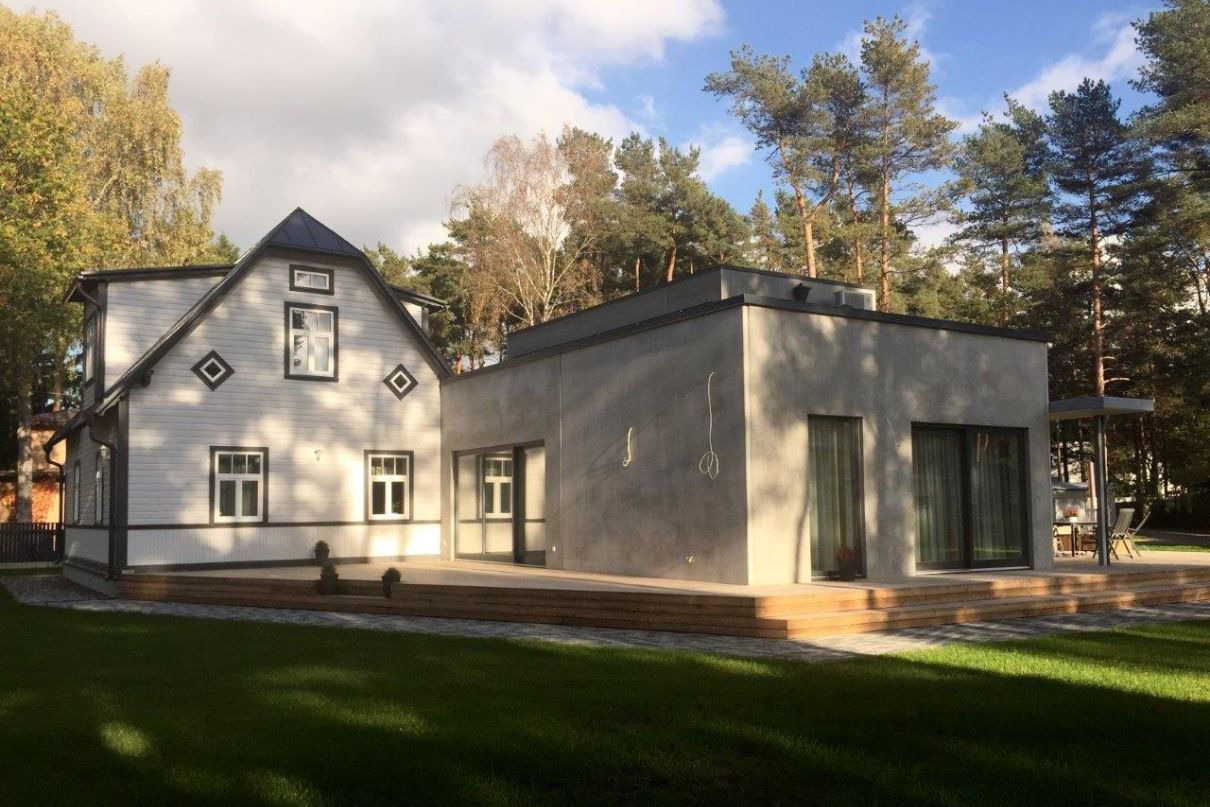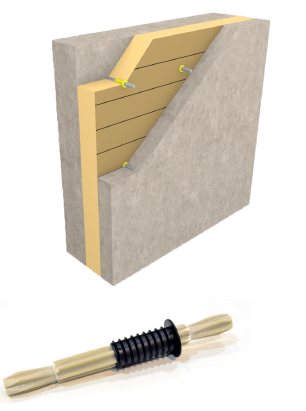
Magazine Ehitaja, March
Detached house in Nõmme that used the technology of composite thermal bridge-free connectors unique in Estonia
Elemental construction has started to grow on the Estonian construction market and its volume is likely to grow even more. The advantages of flat-panel construction are lower cost, the speed of setting up the building, weather conditions independent, quality assured, as well as the technological development of the elemental manufacturers, which offers a wide range of architectural solutions.
Element construction also has to follow the increasingly stricter requirements of energy efficiency. The development of construction insulation has seen a major change all over the world. PIR insulation has found a firm place on the market thanks to its optimal cost and ease of use. External structures, including triple-layer external wall elements, have become thermal bridge-free, leaner and more durable in time, but the price of the structure has remained the same.
The technology of composite thermal bridge-free connectors that has already gained a foothold in Europe was first adopted in Estonia by OÜ Enerest in cooperation with E-Betoonelement in the construction of a detached house in Tallinn that was also nominated as the concrete building of the year.
The new technology enabled achieving a thermal transmittance of a triple-layer external wall of 0.09 W/m2K at a wall thickness of only 47 cm. At the same thickness, a traditional panel can only achieve a thermal transmittance of 0.15 W/m2K, i.e. only 60% of the potential thermal transmittance.
The insulation of the panel was based on IKO Enertherm's strong KRALU insulation board (24 cm) and cold-brush Thermomass STAR fiber bundles based on steel-bonded concrete layers. Thermomass bonds make it possible to save money at the expense of thermal insulation, because they do not have to take into account the effect of thermal bridges. Their installation through insulation is tight, providing the best quality.
Providing the same heat transfer through traditional technology would have meant a panel of at least 73 cm thick. The new technology therefore gives 26 cm of the interior win of the building from the same warmth. For example, today, the thermal transmittance of outdoor walls in Estonia is 0.15 W / m2K, the corresponding inner surface winning is 12 cm.
Given the economic aspect, perhaps simplified considering the construction price and the size of the area sold, technology becomes economically dubious if the investment exceeds ca 35 euros per wall meter.
Given that the price of panel elements is largely dictated by market demand and therefore the price scale is barely foreseeable, the use of more efficient thermal insulation and cold-free ties in the final price of the product is of little importance. However, for some buildings, 12-cm wide inner surface victory is a cost-effective initial investment for developers or home-builders.
THERMOMASS STAR composite material connector

IKO Enertherm KR-ALU insulation board and THERMOMASS STAR connector